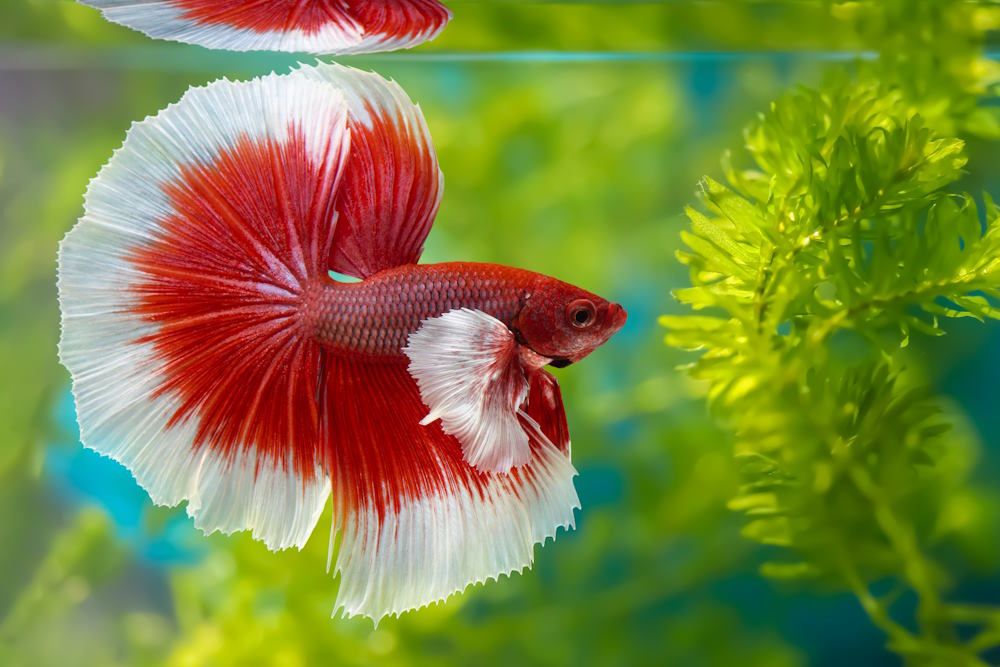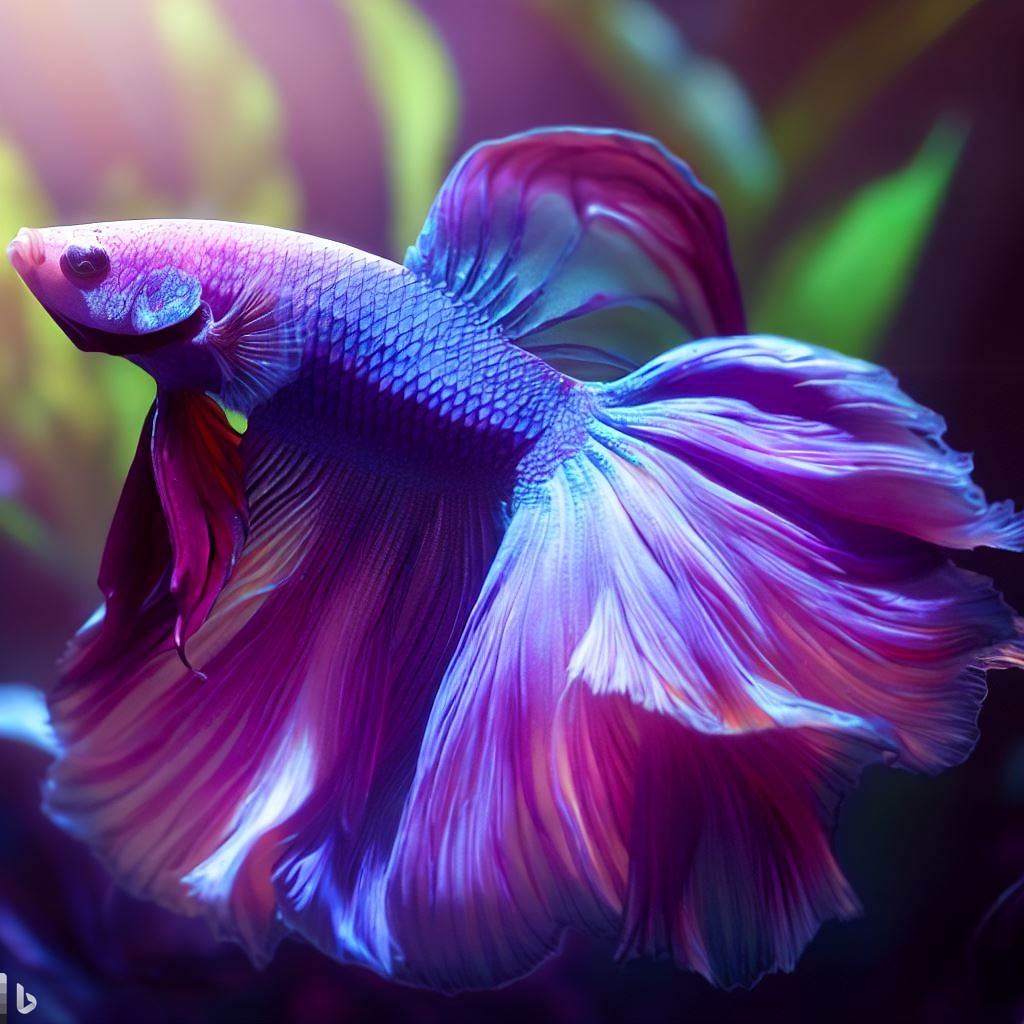Common Betta Fish Illness and Just How to Prevent Them
Common Betta Fish Illness and Just How to Prevent Them
Blog Article
Breeding Betta Fish: a Comprehensive Step-By-Step Overview to Successfully Raising Infant Bettas From Eggs to The Adult Years
Reproducing Betta fish is a meticulous endeavor that requires mindful preparation and implementation to ensure the effective advancement of fry from eggs to grow fish. Selecting genetically varied breeding pairs with preferable features is only the beginning; developing an optimal environment and recognizing the complexities of the breeding procedure are similarly crucial. As the male Betta diligently constructs a bubble nest and guards the valuable eggs, the subsequent phases of treatment and change need focus to information and understanding of best practices. Just how does one navigate the tough yet satisfying path of supporting these lively animals to their adult years?

Selecting Reproduction Pairs
When getting started on the trip of reproducing Betta fish, choosing the ideal reproduction pairs is crucial to accomplishing preferable qualities and a healthy and balanced family tree - betta fish. The primary step in this process is to identify the specific traits you wish to improve or maintain, such as color, fin kind, and physique. It is important to pick genetically diverse sets to prevent inbreeding, which can lead to health and wellness problems and unwanted characteristics
Evaluate potential reproducing candidates thoroughly. A healthy and balanced male Betta needs to show lively shades, an energetic disposition, and well-formed fins, while the lady ought to also display dynamic coloration and a rounded stubborn belly, suggesting preparedness for spawning. Observing the temperament of both fish is vital, as aggressive or excessively shy people might not breed effectively.
Keeping documents of the parent fish's ancestry can aid you track hereditary qualities and potential concerns. Inevitably, spending time in the choice process will considerably enhance the possibility of producing strong, vivid children that satisfy your reproduction goals.

Preparing the Breeding Storage Tank
Producing an optimum breeding environment is an essential action after selecting appropriate pairs for Betta fish. The reproduction container need to be particularly developed to supply comfort and promote the all-natural breeding behaviors of the fish. Start with a storage tank size of at the very least 10 gallons to guarantee ample room for both the male and female Bettas.
Keep a mild filtering system to maintain the water clean while preventing solid currents that can emphasize the fish. Additionally, an air rock can be contributed to offer oxygenation without disrupting the water surface area way too much.
Temperature level guideline is crucial; go for a steady series of 78-82 ° F(25-28 ° C) using a reputable heating unit. The pH level ought to be kept in between 6.5 and 7.5, and normal water adjustments are essential to make certain high water high quality.
Incorporate floating plants or generating mops to develop concealing places for the woman, while likewise urging bubble nest structure by the male - betta fish. Ensure the storage tank is complimentary from sharp decors and any kind of potential dangers, as the well-being of the fish must always be focused on during this essential stage of reproduction.
The Reproduction Refine
Typically, the reproducing procedure for Betta fish entails a collection of distinct and evident habits that suggest why not look here readiness for recreation. The male Betta begins by developing a bubble nest at the water's surface, which serves as a website for the fed eggs. This nest is essential, as it provides a safe environment for the eggs till they hatch.
Once the nest is developed, the man will present courtship habits, such as flaring his fins and exhibiting vivid colors to bring in the woman. The woman, upon picking up the male's readiness, will certainly respond by displaying upright stripes along her body, indicating her receptiveness.
When the women approaches, the male takes part in a breeding dancing, usually resulting in a welcome recognized as the "spawning." During this accept, the female launches her eggs, which the male feeds promptly. The fertilized eggs then are up to the bubble nest, where the male very carefully gathers and returns them to the nest. Following this, the male thinks obligation for guarding the nest and guaranteeing the security of the eggs until they hatch out, usually within 24-36 hours. This stage is essential in the breeding procedure, laying the foundation for successful fry development.
Taking Care Of Betta Fry
Caring for Betta fry calls for mindful focus to their setting and nutrition to guarantee healthy development and growth. After hatching, find out Betta fry are exceptionally little and at risk, demanding a stable and clean environment.
Feeding Betta fry is just as vital. Feed them small amounts several times a day, being mindful not to overfeed, which can lead to water high quality problems.
Transitioning to Grownup Bettas
As Betta fry mature, transitioning them to adult Bettas is a critical phase that calls for mindful management of their atmosphere and social interactions. This procedure generally starts when the fry reach around 6 weeks of age, whereupon they can be slowly introduced to a much more structured living setting.
To promote this shift, it is vital to ensure that the water parameters-- such as temperature, pH, and ammonia levels-- are optimum and steady. Grown-up Betta fish prosper in warm water (around 78-80 ° F) with a pH of 6.5 to 7.5. Slowly accommodate the fry to additional info these problems to minimize anxiety.
Social communications are another essential element; male Bettas are notoriously territorial and aggressive. It is suggested to separate males right into individual tanks as they develop. Women Bettas can be housed together, however care needs to be taken to monitor for signs of aggressiveness.
Additionally, nutritional modifications should be made as the fry expand. Integrate premium pellets and live foods to support their growth and wellness. By handling these aspects properly, you can advertise a successful transition to the adult years for your Betta fish.

Conclusion
Effective reproduction of Betta fish calls for careful interest to information throughout the entire procedure, from picking genetically varied sets to giving optimum look after fry. By making sure suitable reproduction conditions and keeping water top quality, the possibility of healthy offspring increases considerably. Additionally, a well balanced diet plan and gradual adjustment to grown-up atmospheres are crucial for the development and advancement of Betta fish. Adhering to these actions diligently fosters a thriving populace of Betta fish, enhancing both their health and vigor.
Report this page